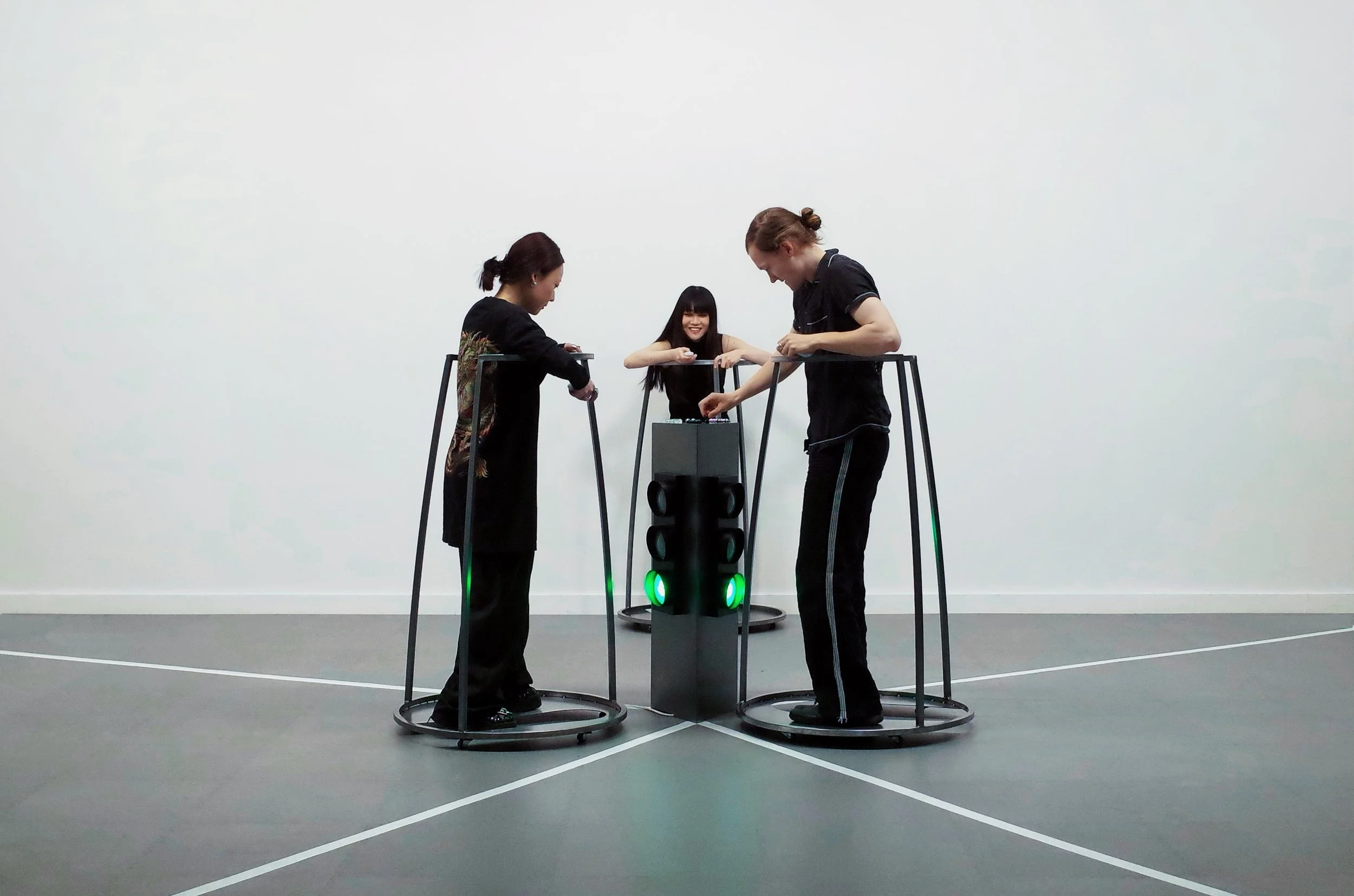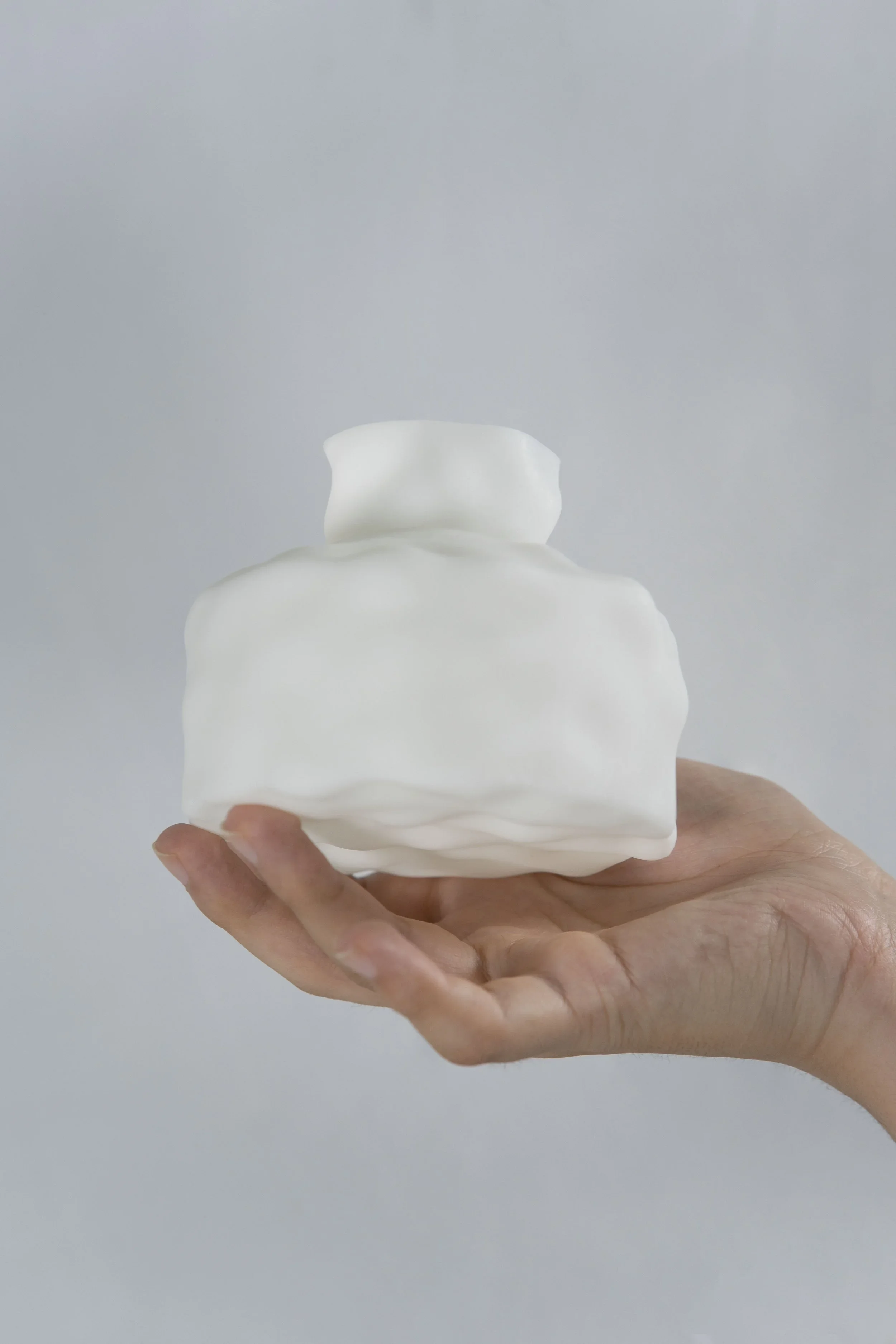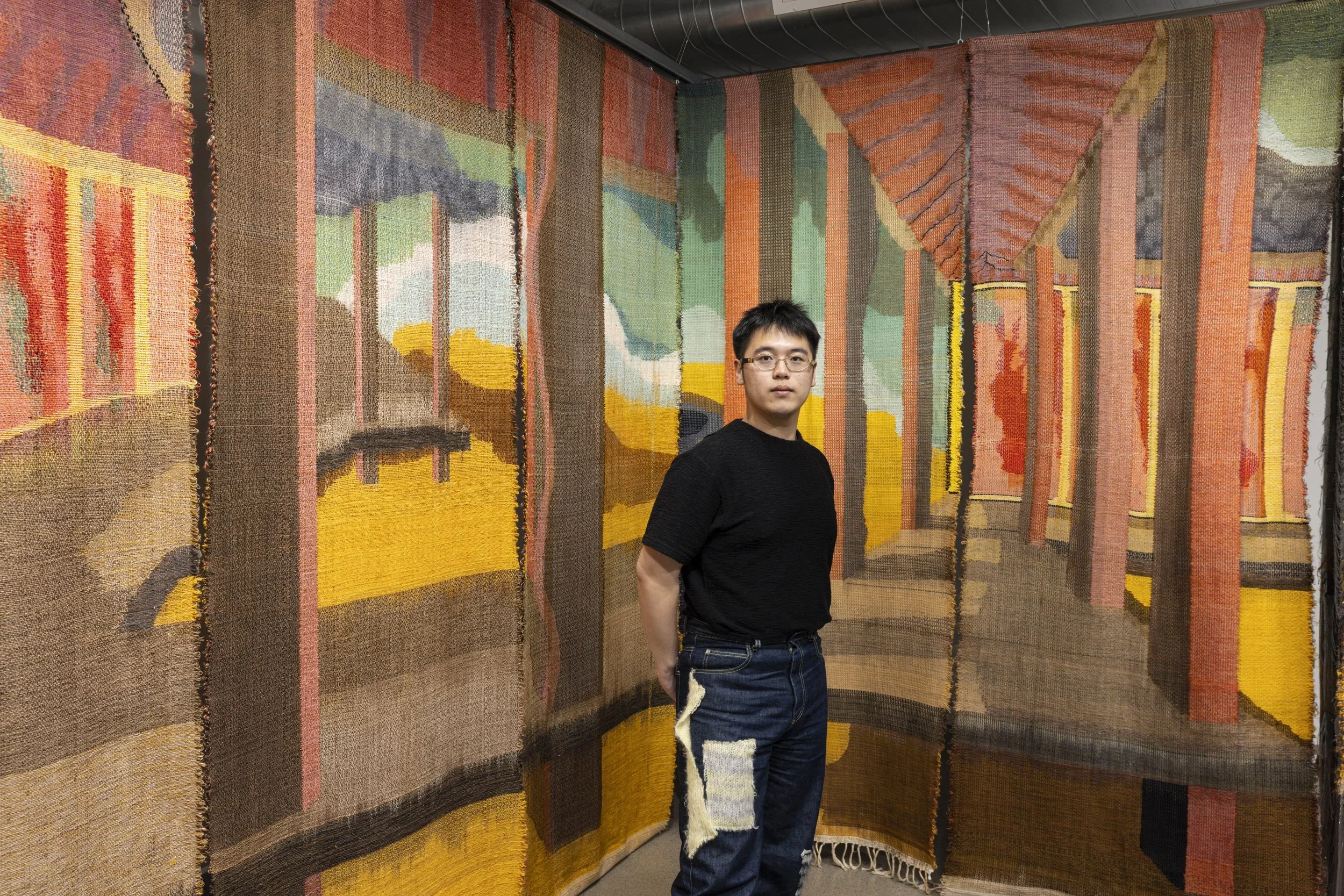10 Questions with Tianlan Deng
Al-Tiba9 Art Magazine ISSUE11 | Featured Artist
Tianlan Deng is a New York-based Artist and Interior Architect. He was the grand-winning commissioned artist by Gatton College of Business and Economics for its Atrium Glass Wall Design in 2017, which features in its permanent collection. His other commissions involve The Lyric Theatre & Cultural Arts Center (USA), Fairmont Pace Hotel (PRC), and Tianjin Crowne Plaza (PRC).
Deng's current project cooperates with Rockaway Park High School at Beach Channel Educational Campus, Rockaway Park, New York. He proposed to create art installations with projected media while improving the school's prison-like interior atmosphere, offering an alternative learning experience and promoting student recruiting.
Tianlan Deng's work involves interdisciplinary practices, including site-specific installation, projected media, sculptural, architectural design, and traditional Asian painting. His works are exhibited internationally in the USA, Europe, and China.
Tianlan Deng - Portrait
ARTIST STATEMENT
Moving to the USA after 20 years of growing up under the Chinese school educational system, Tianlan Deng built a strong interest in institutional topics and spatial experience design, focusing on progressive education and academic space.
Deng’s installation is a commentary on the de-individualization found in educational systems present in China. While China’s education plays a significant role and influence on standardizing the identity of China’s youth, Deng feels there is a parallel with the United States. The U.S. has a significant number of public schools that have been criticized as direct pipelines to prison systems, leaving a stigma on generations of young students. In addition, collectivism training and mass cultures are at the core of political influencers. Through the repetition of individual form, Deng’s work presents the complexity of these politics of the masses present in both the Asian and the Occidental political structures, both supporting a greater whole hierarchy, leaving the individual with a general feeling of emptiness.
School Room, Paper, Ink, Mannequin, Wooden Sculpture, Variable Size, 2018 © Tianlan Deng
INTERVIEW
First of all, introduce yourself to our readers. How did you start getting involved with art? And when did you realize you wanted to be an artist?
My name is Tianlan Deng, and I'm a China-born New York-based artist and designer.
I engage in art for a specific reason. During the preparation period for the Chinese College Entrance Exam, I decided to become an art student because Chinese art colleges have a higher acceptance rate. I have never been considered a "good" student in traditional math, physics, and Chinese courses, and I have always struggled with the test-driven education system. However, after the "Art switching," I became proficient. Despite the fact that the art practice is quite mechanical, I enjoy it, as it boosts my confidence and relieves my stress during the period. My improvisational choice helped me land a good art college in Shanghai, and the journey became one of my precious memory.
As a graduate art student in the United States, I strived to become an artist. Although the Chinese College Entrance Exam seemed to be away, I still lived in the trauma of the education system. Living under a test-dominated education for 20 years, I had little individuality and couldn't find my identity while living abroad. Therefore, I wanted to become an artist to construct my identity and expose the underlying problem. Art provides me with avenues for expressing my pain and concern regarding education.
Maze, Written Rice Paper, Variable Dimensions, 2017 © Tianlan Deng
You studied in China and later moved to the USA. How did this change influence your work? Do you feel this move had a significant impact on your way of creating?
After graduating from art school, I spent several years creating artwork in Lexington, Kentucky, where I enjoyed having my voice heard. However, as an international artist, I seek a larger platform in order to reach more audiences and network with my peers. I moved to New York while studying interior architecture at Pratt Institute. The high level of globalization in New York significantly broadened my understanding of the topics and issues I related to. Many New York public schools are also heavily in favor of test-oriented teaching styles, making me realize that education problems have a global dimension. In addition, New York's diverse communities and culture heightened my interest in social engagement. My artistic practice began with an emphasis on community-based education.
You work with several different mediums and also involve public spaces in your work. How would you define yourself as an artist today?
My work incorporates both physical and digital mediums. I create wooden sculptors and paper hanging installations, and I also create project mapping to interact with the various surface. Doing an Art or Design commission for public space is essential to my work because it establishes the social dimensions. It brings opportunities for my art to be "visible" or "heard." I value this fact, and I don't want to produce work only shown in the gallery. As previously stated, as a New York-based artist, I dedicate myself to being a community contributor.
Tally Mark, Glass Film, 32x2,92 m, 2017 © Tianlan Deng
Tally Mark (Detail), Glass Film, 32x2,92 m, 2017 © Tianlan Deng
In your work, you analyze the school systems of both China and the U.S. and find similarities in how both systems do not incentivize personal expression and realization. Do you think art can help students and improve these systems?
Education based on standardized testing promotes unicity, a systematic way to de-individualize students. On the contrary, art courses are beneficial to building students internally and learning to appreciate art help to build creativity, critical thinking, and expression. However, the school needs adequate funding to create art activities or courses; Currently, this is not the case for many. Therefore, it will be more practical if I can make the artwork more accessible and use it to help the school raise funds.
Let's talk about your project with Rockaway Park High School. How did you come up with this idea? And what was the response of the students?
I visited public schools in several underdeveloped areas of New York in 2019. I believe that many schools are experiencing a "downward spiral" that will eventually lead to collapse. The problem begins with the prison-like interior atmosphere of the school. For security purposes, the majority of public schools have window bars, metal detectors at the entrances, and security guards on patrol. These negative connotations, coupled with the exam-centric instructional approach, are extremely unengaging and depressing. It infiltrates student behavior and taints learning quality, which will later substantially affect the school's graduation rate. A low graduation rate will reduce government funding, the primary source of funding for public schools in the United States. Eventually, the school's poor financial situation will affect every aspect of its operating system, including its security, educational philosophy, and facilities. It will eventually return to erode the school's interior atmosphere and restart the cycle.
I developed a proposal for an architectural design that creates installations to better organize school space, neutralizes the native connotation, introduces playfulness, and offers alternative learning methods. It will also transform the public school into a community center, increasing the school's media exposure for fundraising and recruitment. I believe the proposal's implementation can stop the "downward spiral."
The students and faculty at Rockaway Park High School are enthusiastic about implementing my proposal, and I believe they have the capability to do so. I had great conversations with them by sharing my sketches and renderings. The students also provide me with innovative suggestions to refine my design. Their desire to "walk while learning" became the design's guiding principle.
How much of your personal experience is reflected in your series? And how do you incorporate your real-life experiences into your work?
My artwork is influenced by my personal experience and recollection of the Chinese educational system.
"Maze" is an example of my paper hanging installations. I wrote the text on rice paper, which instantly blurs. The performative work echoes the rote learning experience and how the memory felt after years. The content of the text is Chinese ancient poems and proses, which students must write from memory to gain scores in the college entrance exam. I use these written rice papers to create a maze that transfers my memory into the spatial experience.
"Cave" is another relevant work. I designed an educational "Allegory of Cave" using a miniature classroom diorama and project mapping. It is an intimate space of my memory, but it engages the audience and reveals the issue, which may elicit resonance.
On the contrary, what would you like the viewers to learn from your works? And what messages do you want to convey?
I never refer to my artwork as an educational tool. Instead, I wish it were a method for identifying and recording issues. My memory, which is exposed by the artwork, is also the collective memory of many others who went through a similar education system. Therefore, it may elicit resonance or response from the audience. Whether or not people agree with the system, I believe my work raises awareness of the global education problem.
Scars © Tianlan Deng
Fence, Glass Film, 853x283 cm, 2018 © Tianlan Deng
What about the past couple of years? How did the global pandemic impact your work? Did you reflect on this subject, or did you avoid it altogether? And did you find any difference in your approach to art now compared to the pre-pandemic times?
The past few years have been challenging, inspiring, and difficult. My school project was temporarily halted by the pandemic, but has since resumed. However, the pandemic is a once-in-a-lifetime experience for me and possibly for everyone. It gives me a new perspective on myself, communities, nations, and the world. It gradually shifts the emphasis of my artwork from personal experience, memory, and identity to more fundamental and universal subjects such as humanity and environmental issues. I'm working on a new series of wall pieces called "Scars." It relates to my daily pandemic life, which is the collective memory of all the New Yorkers during the quarantine period.
Let's talk about the future. Is there anything else you would like to experiment with? Have you considered incorporating in your production NFTs or other new digital technologies?
I am aware of the limitations of a physical installation due to the pause in the school project. As a result, I am developing VR for the project so that students who do not attend school can experience it virtually. I also work on augmented reality and motion cameras for the on-site installation, which will provide students with more interactive elements.
I believe NFTs will be inevitable in the future since the world tends to digitalization and dematerialization. I'm working with a software engineer on a digital art project, which will drop into the NFTs market. However, I think tangible artwork has irreplaceable power and value. Therefore, I will have both tangible art and NFTs in my future portfolio.


























